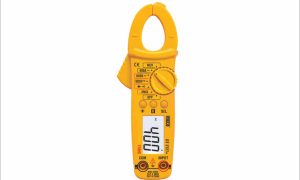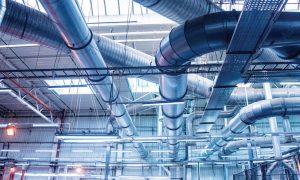Subramanian N E, Managing Director of Saint-Gobain India’s Insulation Business, discusses the evolving design processes prioritising sustainability, the role of building codes, and the innovative Climaver product range’s benefits and certifications. Meeting demands for efficiency, sustainability, and safety is crucial among the evolving market trends.
How does the design process evolve to prioritise sustainability alongside performance and ensure compliance with regulations?
Regulatory changes have been instrumental in driving innovation in the HVAC industry. Phasing out ozone-depleting substances and high-GWP refrigerants has pushed the industry to adapt its design processes to prioritise sustainability with performance and ensure compliance. At the industry level, the selection of insulation materials accounts for more than just their thermal properties. The factors such as environmental impact, health and safety considerations, acoustic performance, fire safety, and energy efficiency are also considered.
How do building codes contribute to enhancing efficiency and performance in HVAC systems?
Building codes play a pivotal role in driving efficiency and performance, with the Energy Conservation Building Code (ECBC 2017) serving as a critical guideline for sustainability and energy efficiency in HVAC systems. Bodies like the Indian Green Building Council’s (IGBC) and Green Building Rating System (Green Pro) promote energy-efficient building materials and technologies, including insulation materials in HVAC systems.
Saint-Gobain Insulation, focuses on delivering high-performance and energy-efficient solutions for the HVAC industry through our innovative products and dedication to environmental stewardship. Saint-Gobain Insulation has developed innovative solutions such as Climaver duct boards (pre-insulated) and Twigainsul Acoustic Board. These alternative sustainable solutions offer energy conservation, fire safety, noise reduction, and reduced building load factors. In addition, all Saint-Gobain products are certified by Green Pro by IGBC.
How does ourClimaver product differ from conventional ducting systems, and what benefits do they offer customers?
Saint-Gobain India is driven by customer-centricity. Our focus is on delivering high-performance solutions that are innovative, light, and environmentally sustainable, exemplified by ourClimaver Pre-Insulated Duct Boards range. Unlike conventional ducting systems such as GI+Insulation, these products offer comprehensive solutions with unmatched benefits.
The Climaver Duct Board is designed to significantly reduce energy consumption by 15 percent while complying with ECBC standards. Weighing less than half of traditional ducting setups, it allows for quick and easy installation. Additionally, the EUCEB certification confirms the bio-solubility of our mineral wool products, supported by over 2500 scientific publications.
Our Climaver Duct Boards offer exceptional sound absorption capabilities, with weighted absorption coefficients of up to 0.85, effectively minimising noise from HVAC systems. The core of these boards, made from non-combustible glass wool, ensures fire safety.
Through rigorous testing, our Climaver Duct Boards can withstand pressures of up to 2000 Pa and airflow speeds of 18m/s, maintaining high manufacturing standards. Their lightweight design and simplified installation process increase on-site productivity by up to five times. Moreover, manufactured from 60-80 percent recycled glass wool, our product contributes to reducing carbon emissions, aligning with sustainability goals.
The Climaver Pre-Insulated Duct Boards range depicts performance, efficiency, sustainability, and safety, adding value for our customers.
How do Saint-Gobain’s glass wool-based products ensure compliance with health and safety standards?
Saint-Gobain, with a history spanning 359 years, aims to lead globally in environmentally friendly construction. Through ongoing innovation, we provide integrated solutions that carry sustainability and performance, guided by our purpose: “Making the world a better home.”
Our insulation products, including glass wool, are certified by EUCEB, ensuring they meet rigorous health and safety standards as non-carcinogenic and non-hazardous. EUCEB, or the European Certification Board for Mineral Wool Products, is a global certificate that certifies mineral wool products bearing the certificate are safe for use as non-carcinogenic and non-hazardous products.
Please discuss the features and certifications of Saint-Gobain’s Twigainsul Acoustic Board for Air Handling Units.
Our premier product for Air Handling Units is the Twigainsul Acoustic Board, featuring a compressed fibreglass core. It has a front layer of black glass cloth and aluminium cladding on the rear. It boasts excellent sound absorption capabilities, with a Noise Reduction Coefficient of 0.65 for a 25mm thickness and 0.75 when paired with a 35mm air gap.
This sustainable product features a non-combustible core, excellent acoustic properties, mechanical rigidity, and easy installation. Additionally, it holds major certifications, including EUCEB, FM Approved, ISI, Green Pro, and GRIHA, making it the ideal solution for air handling units.
Why is ensuring fire safety in HVAC insulation crucial, particularly in emergencies?
Ensuring fire safety in HVAC insulation is crucial. Fire-resistant insulation helps prevent the rapid spread of flames and smoke during fires, aiding safe evacuation and limiting damage. Rubber-based insulations, being flammable, can worsen such emergencies.
For example, during the Covid, a renowned vaccine company experienced a fire in one of its buildings. The fire brigade team responding to the incident observed the presence of flammable insulation materials, which exacerbated the situation.
Often, fire safety is neglected when selecting the proper insulation for HVAC systems. Fire safety considerations are crucial for ensuring the overall safety and effectiveness of HVAC systems.
Our insulation products, whether glass wool or stone wool, are inherently non-combustible and BS 476-Part 4, 5 & 7 certified, ensuring fire safety and compliance.
What factors are propelling market trends like urbanisation, expanding building spaces, and the impacts of climate change?
Major market trends are emerging in the air conditioning industry due to factors such as increasing urbanisation, expanding building spaces, and the impacts of climate change.
One trend involves addressing urban heat islands, where cities become hotter than surrounding rural areas. This has led to a demand for air conditioning solutions that efficiently cool indoor spaces and combat these effects through innovative design and technology. Another trend is the rising popularity of exposed ductwork in modern architecture and interior designs. Rather than concealing HVAC ducts behind false ceilings, this approach exposes them, particularly in commercial projects, emphasising the importance of aesthetics in ductwork design.
Additionally, a growing focus is on sustainable cooling solutions driven by climate change concerns and environmental awareness. This shift includes the adoption of lightweight and sustainable refrigerants, energy-efficient equipment, and green building designs (ECBC) to align with evolving standards contributing to sustainability.
We continuously monitor emerging national and global trends to ensure that our HVAC solutions adhere to the latest standards and support sustainability initiatives. Our product line is designed to meet customer needs for sustainability, functionality, and aesthetic appeal.
Cookie Consent
We use cookies to personalize your experience. By continuing to visit this website you agree to our Terms & Conditions, Privacy Policy and Cookie Policy.
















Pingback: "Eco-Friendly HVAC Solutions and Canada's Green Grants"